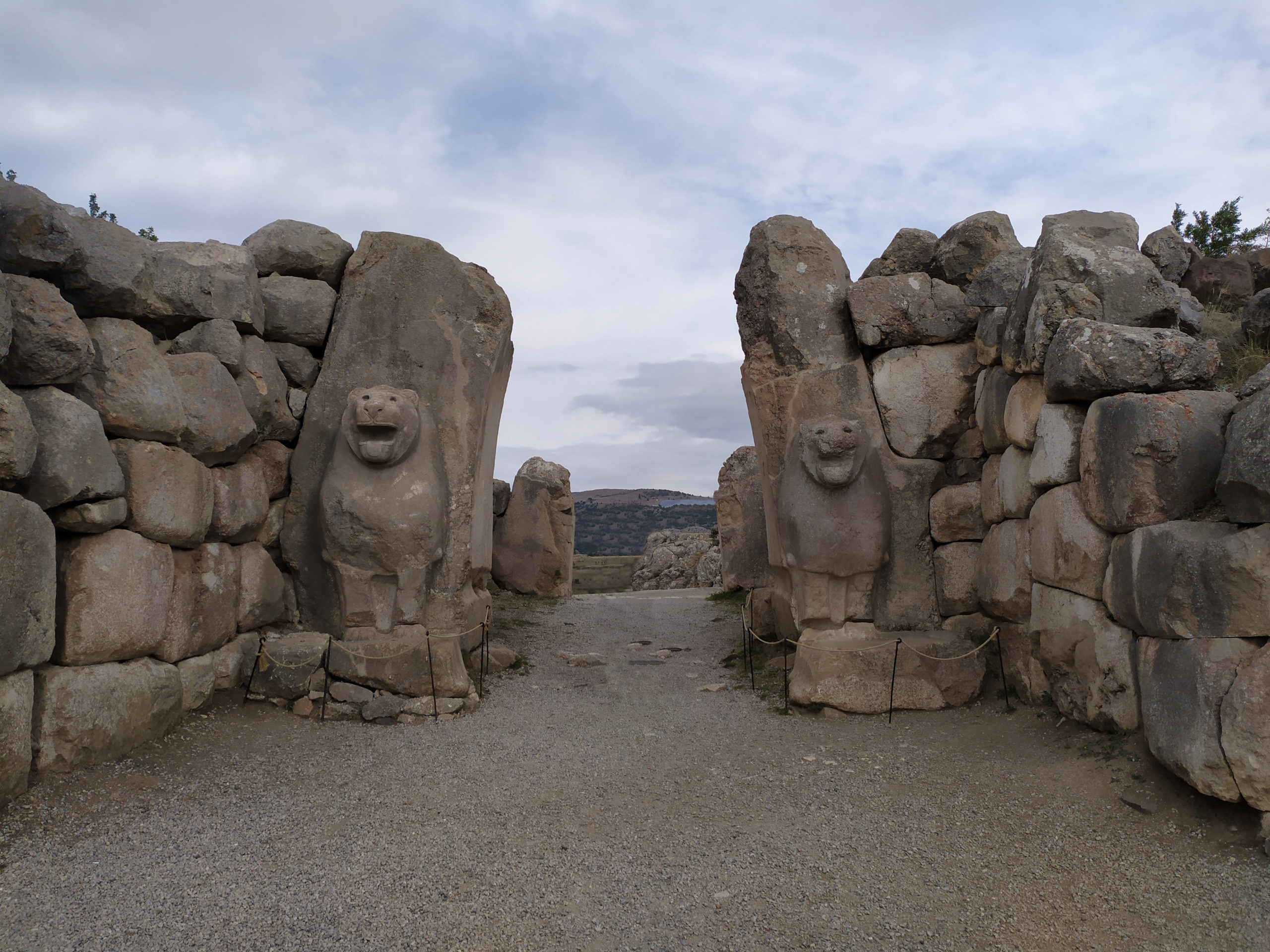The winter solstice is the shortest day of the year, and the world moves towards a new beginning, a rebirth following the calendar of the seasons and divinities. Most probably on this day in Hattusa – the ancient capital of Hittite Empire located in the Anatolian Plateau – the king performed the ritual ceremony across the city following the Sun’s path. Highlighting the end of a year and the beginning of a new one.
In 1905 Hugo Winkler – professor at Berlin University and expert in cuneiform script – rediscovered, 150 kilometers from the Turkish capital Ankara, one of the most important cities of Bronze Age: Hattusa. It is since then that extensive studies have begun on this incredible city to discover all its secrets, especially those related to ancient religious rituals. Luckily for us the site was progressively abandoned starting from the decline of the Hittite Empire in XII sec BC, this has meant that his incredible constructions reach up to the present day and we were able to understand how important the role of the gods was in the city layout.
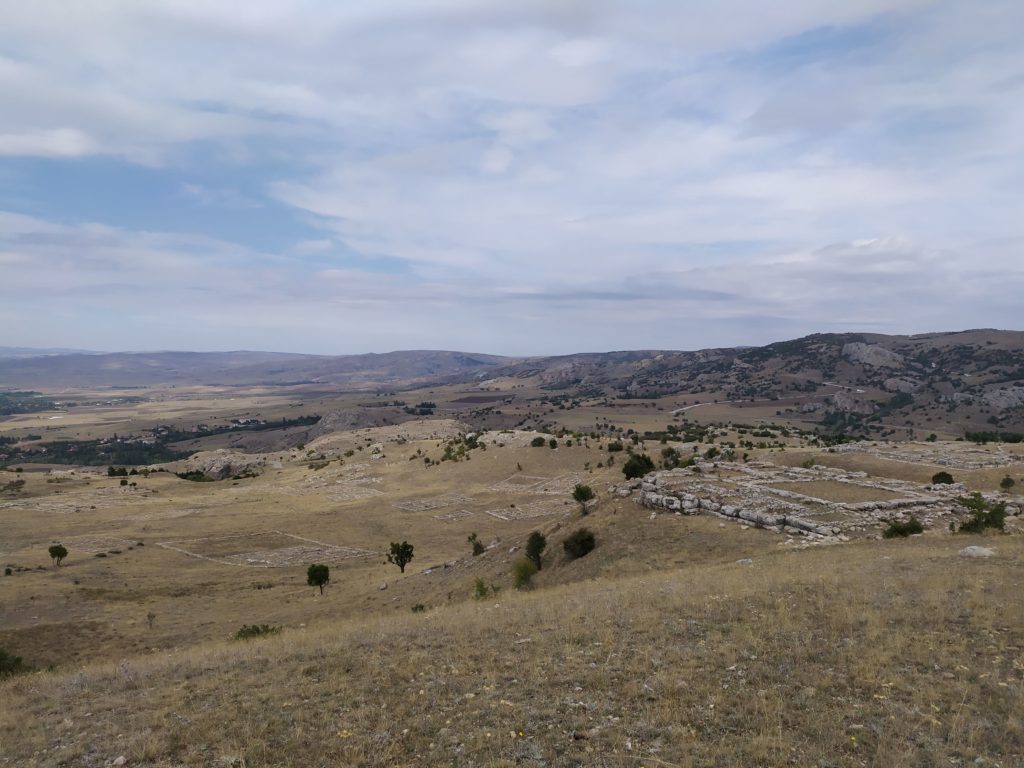
The city – better, the archeological site – that we can see nowadays is the result of several construction phases starting in XVII sec BC with the king Hattusili, ha gave the name to the city choosing it as his capital. Hattusa can be divided into three areas: to the north the lower city which is the oldest part, to the east the citadel with the royal residence and to the south the upper city, the most recent. This part of the city is surrounded by imposing defensive walls, interrupted only by the monumental doors, rich of decorations on the jambs. It was precisely here that the ritual path of the king probably took place. Compass in our hand and let’s try to do this experience too!
The importance that solar orientation had in many ancient cultures is known and numerous Hittite cities, especially those with a strong sacred character such as Hattusa, were characterized by monumental gates that did not have a merely defensive function. Some of these were richly decorated and arranged according to a symmetrical layout, oriented to the solstices or precise cardinal directions, therefore probably linked to ritual or ceremonial activities.

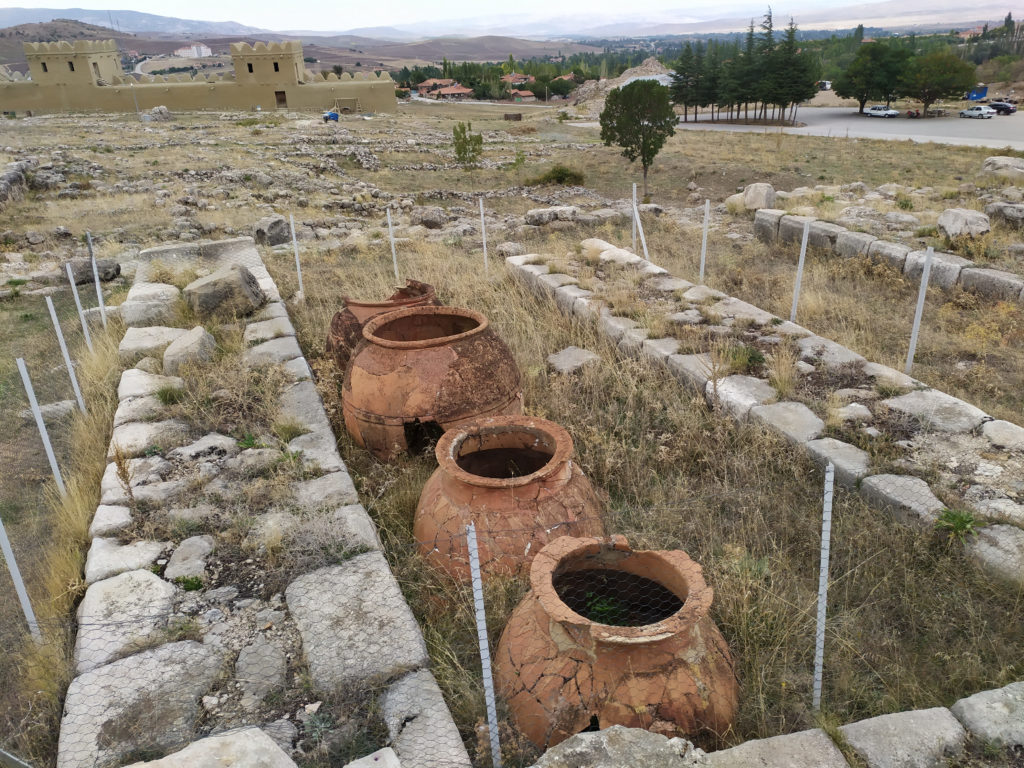
In Hattusa, the ritual path started at the East, from the King Gate through which the sovereign left the city walking along the walls and climbing the side staircase of the Yerkapi to go back into the town from the Sphinxes Gate to the South. The king went againt out of the city passing through the dark tunnel placed under the Yerkapi – this is oriented precisely according to the north-south axis and is called the Earth Gate – to return to the light of the sun “reborn” and re-enter finally to the city from the west, through the Lion Gate.
The monumental gates
On the internal jamb of the King Gate there is a high relief depicting a warrior with a sword, an ax and an horned helmet. Perhaps it represents the king or perhaps the god Sharumma, son of the storm god Atti and the sun goddess Arinna.
The Sfinx Gate is decorated both inside and outside with four monolithic statues of sphinxes with the body of a lion and a humanoid head. This gate is placed on the top of the Yeriapi, an artificial stone hill (250m long, 80m deep and 30m high) which represents the Earth Gate and is crossed for its entire length by a tunnel aligned with such precision that you can see the light from one end to the other. The Yerkapi is a strongly symbolic element showing the power of the city.
The Lion Gate has ornaments only on the external jambs: two giant lions with gaping jaws, placed to guard the city.
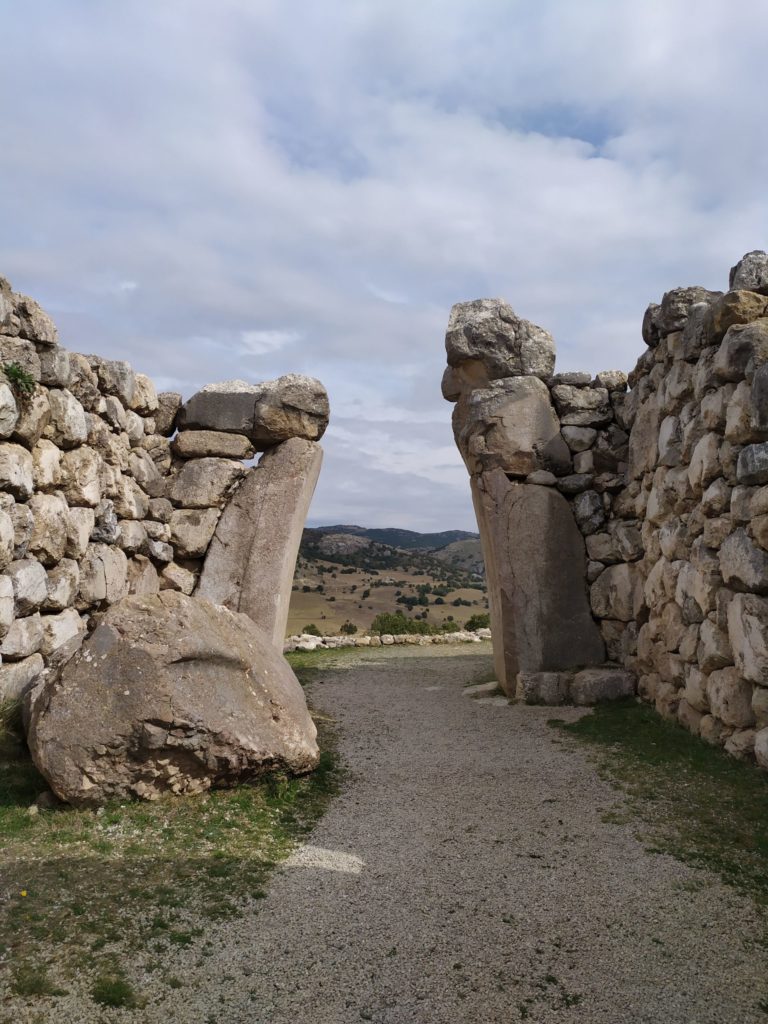
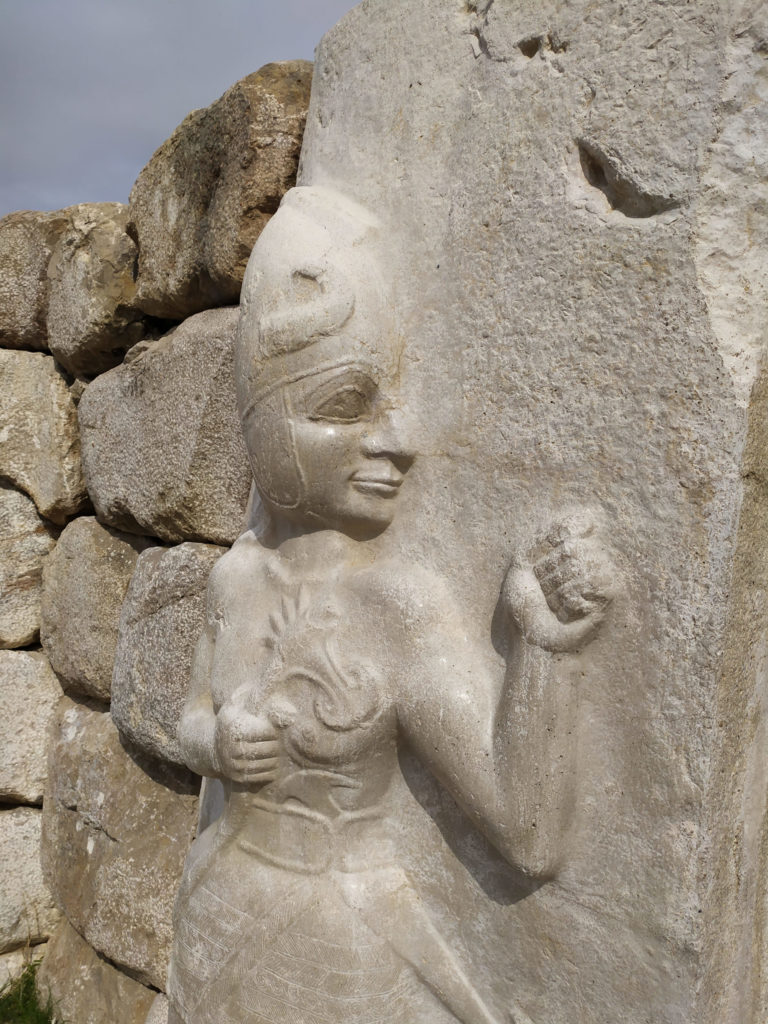
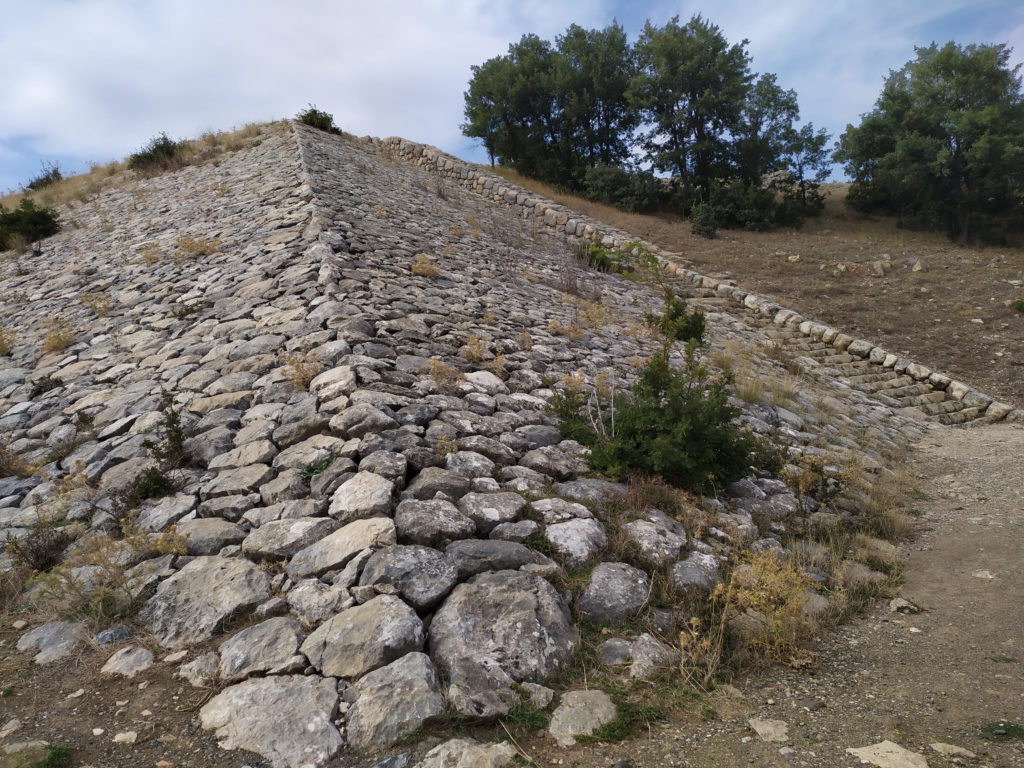
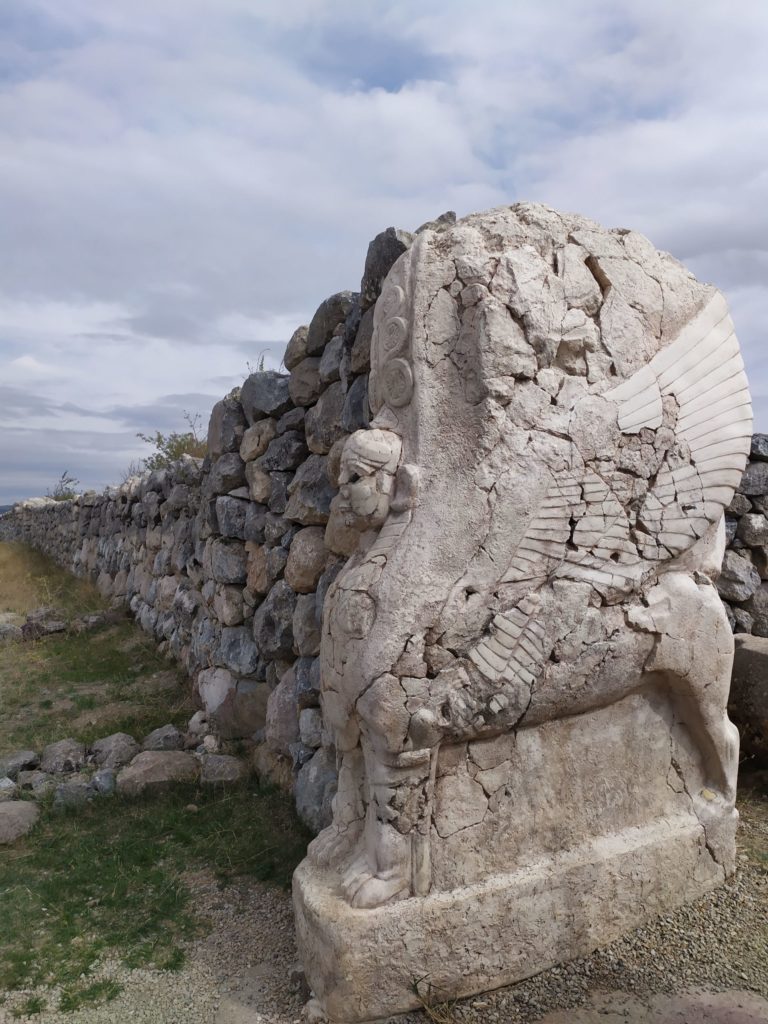
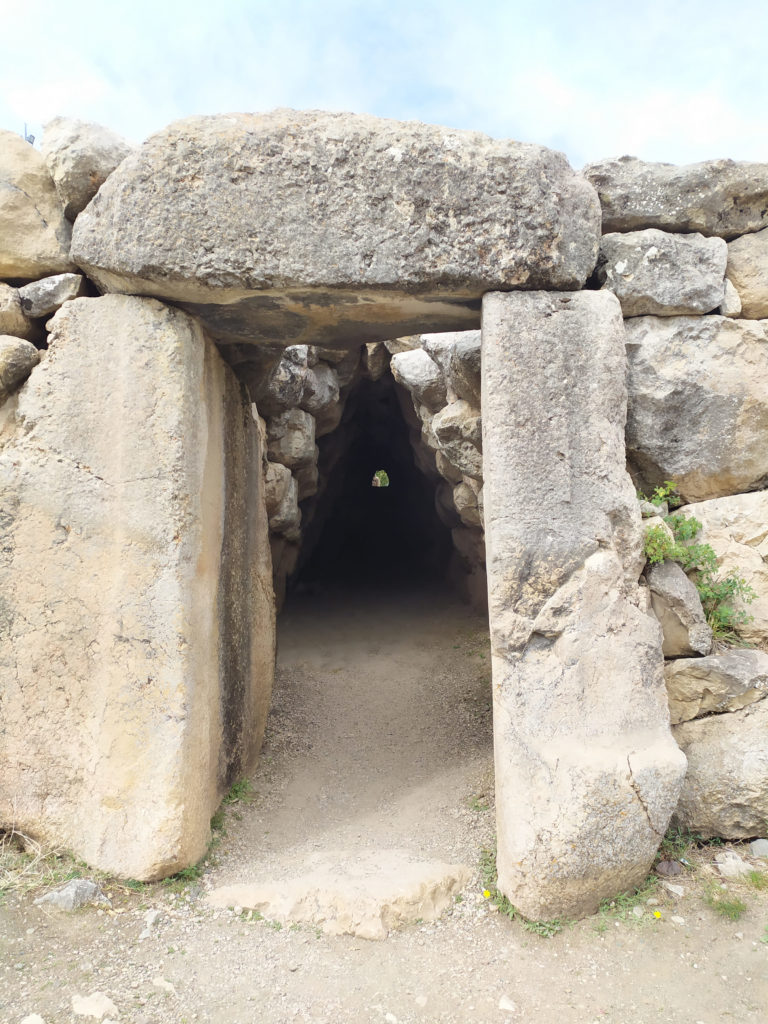
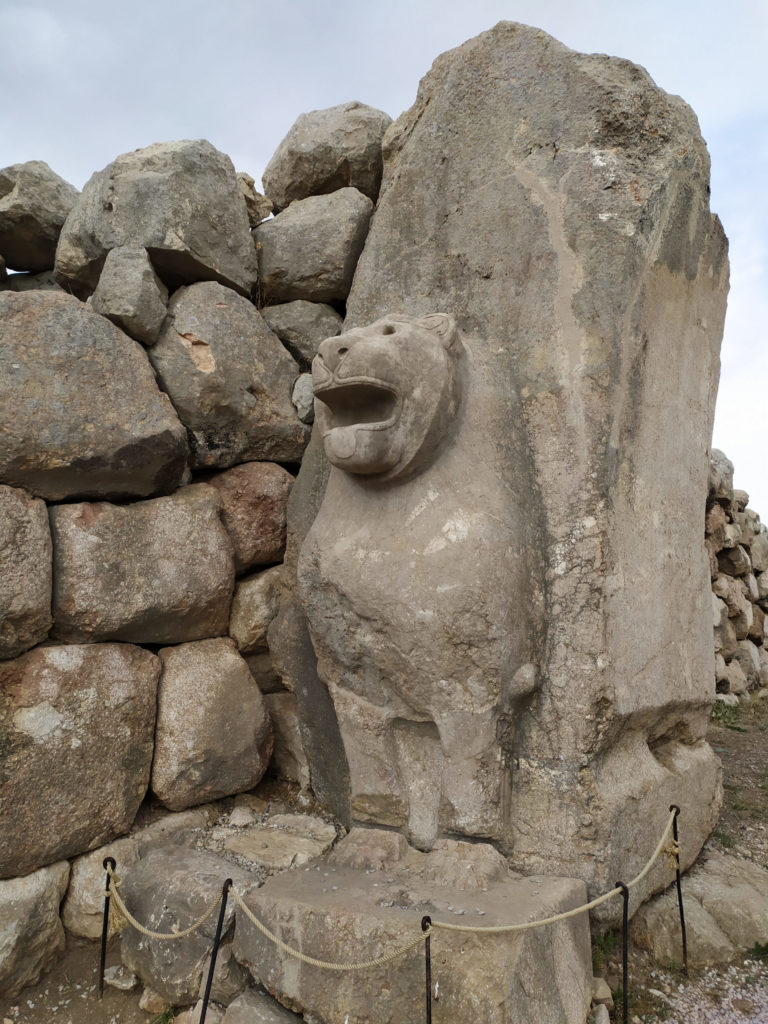
Obviously we don’t know how the winter solstice in Hattusa could really be celebrated but it is exciting to imagine a king who metaphorically drived his people through the rebirth. Towards a new year following in the footsteps of their ancestors. Visiting Hattusa this atmosphere can still be felt, we can retrace those same steps and experience a story so that it will not be forgotten.
XXXXXXXXXXXXXXXXX